Quicklinks:
Introduction
Metals are one of the most versatile of all construction materials. The process of refining metals allows them to be constructed into almost any shape with limitless possibilities. Metals in construction are rarely used in their purest form — pure being metals that have not been alloyed (combined) with other metallic elements; commercially pure metals are 99% pure minimum. Some of the metals listed below are available as commercially pure and many can be manufactured to be extremely pure, often 99.999% minimum, referred to as “five nines min.”
Alloy
An alloy is a mixture of chemical elements of which at least one is a metal. Unlike chemical compounds with metallic bases, an alloy will retain properties of a metal in the resulting material such as electrical conductivity, ductility, opacity, and luster, but may have properties that differ from those of the pure metals, such as increased strength or hardness. This is typically why alloys are used, in order to add desirable qualities to the metal.
- EXAMPLE: Adding Chromium and nickel to steel makes the steel corrosion resistant, or stainless. It is the ability to make alloys that makes metals so versatile.
Smelting
The process of refining material to extract the “pure” metal. Once the base metal is obtained, it usually undergoes further treatment to eliminate any impurities that might affect its use.
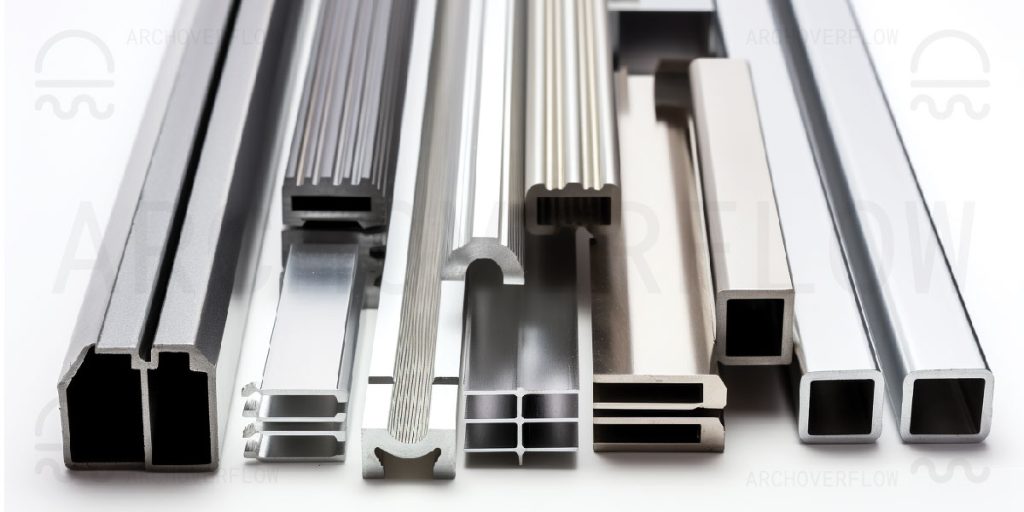
Fabricating Metals (forming)
Fabrication refers to the different processes of forming and shaping refined metal into the desired condition. The most basic fabrication method is casting, however there is also rolling, extrusion, etc.
CASTING: Molten metal is poured into a form where it is allowed to cool and harden into the desired shape.
ROLLING: Process of passing metal through rollers to produce the needed shape. Rolling can be done hot or cold
- HOT: Generally eliminates flaws in the metal. (all metals except iron)
- Most structural steel is hot rolled.
- COLD: Increases the metal’s strength and elastic limit but decreases its ductility. Ductility is the ability of a metal to deform permanently under stress.
- Most smaller structural sections are cold rolled for the increased strength.
- Decreased ductility means the metal won’t deform as much under stress, but instead will fail such as a breakage, shear, etc. The metal will be more ‘rigid’.
EXTRUSION: Pushes metal through a die to form a shape. Many aluminum sections are formed this way, especially decorative sections and those used for doors and windows. If sufficiently large quantities are needed, then custom shapes and dies can be made for a particular job. Dies can break during the manufacturing process and therefore certain shapes are more difficult to extrude than others.
DRAWING: Similar to extruding, but the metal is pulled through a die instead of being pushed through.
- The drawing process usually reduces the size of the piece or changes its shape, but it also improves the strength and surface qualities of the metal. Drawing is applicable for all metals except iron.
BENDING: Changes the shapes of tubes and extruded shapes by passing them through various kinds of rolling machines and presses.
BRAKE FORMING: Takes plates and sheets of metal and makes successive one-directional bends to fabricate the shape.
SPINNING: Forms round shapes on a lathe.
EMBOSSING: Makes patterns on flat sheets of metal by passing them through a machine with the embossing patterns on rollers.
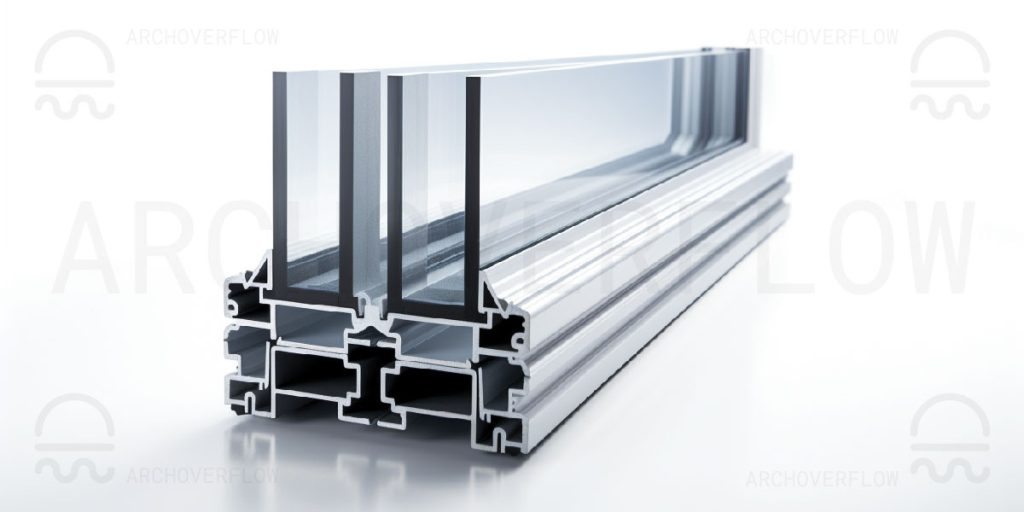
Treating the Metals
Once the metal is formed, it’s common to treat the metal in different ways to further impart desirable characteristics.
ANNEALING: The metal is reheated and slowly cooled to obtain a more ductile metal which will have improved its machinability and cold-forming characteristics.
- Meant to relieve stresses in the metal caused by cold working, and can alter ductility, strength, and other mechanical properties.
QUENCHING: Involves heating the metal (typically steel) to a certain temperature and then rapidly cooling it by complete submersion in water or some other liquid. This strengthens the steel. Quenching makes strong steel, but makes brittle steel. So after quenching, the steel is normally tempered.
TEMPERING: Similar to quenching but does not involve rapid cooling. It is also used to improve the strength and workability of steel
CASE HARDENING: Produces a hard-surface steel over a relatively softer core.
- Heating metal and then diffusing a gas (commonly carbon or nitrogen) into its surface, creating a thin layer of a harder alloy.
Finishing Metals
There are three general types of metal finishes. Not all of these finishes are used on all metals. When selecting the type of finish for a metal, considerations of cost, appearance, amount of protection required, long term cost (life-cycle cost) and required maintenance.
MECHANICAL FINISHES: Alter the surface of metal in some way. This can be simply by changing the way the metal comes from the final forming result, or may result from more refined finishing methods such as grinding or buffing.
CHEMICAL FINISHES: Are produced by altering the surface of the metal with some type of chemical process. Sometimes this cleans and prepares the surface, other times they protect or color the metal. Anodizing of aluminum is one type where the metal is immersed in an electrolyte bath and a current is applied to the metal. This helps create a variety of colors and also becomes integral to the aluminum structure.
COATINGS: Finishes that consist of applied materials such as paint that may be for protection of the metal or purely decorative. Coatings may be clear or opaque.
- BONDERIZE: Coat with an anticorrosive phosphate solution in preparation for the application of paint, enamel, or lacquer.
| MOST COMMON POLISHED FINISHES FOR ARCHITECTURAL WORK | |
| No 3 | Intermediate, dull finish, coarser than no.4 |
| No 4 | General-purpose polished finish that is dull and prevents mirror reflection. One of the most commonly used. |
| No 6 | Dull satin finish |
| No 7 | Highly reflective polished surface |
| No 8 | Most reflective, used for mirrors and reflectors. Seldom used for architecture (no 7 is used instead). |
Joining Metals
All types of metals can be mechanically fastened using bolts or screws.
- Plastic or rubber washers are needed to prevent GALVANIC ACTION between some metals
- Small screws can be used to attach light gauge metals, these are typically self tapping
WELDING: Joining of two metals by heating them above their melting point. When they cool, the metals physically form one piece of metal.
- Very common for structural steel.
- Not appropriate for thinner sections where the weld will translate through.
BRAZING: Joining of two metals at an intermediate temperature by using a non ferrous filler metal with a melting point above 800degreesF (but lower than the welding).
- Usually used for brass, bronze, and some aluminums.
- Results in a clean joint, but some buffing may be required.
SOLDERING: The joining of two metals using lead-based or tin-based alloy solder filler metal that melts below 500 degrees F.
Adhesives
Metals can also be fastened with adhesives. This method is usually reserved for small trim pieces and sheet stock where the strength of the bond is not critical. Normally, adhesives are used when fastening metals to other substrates such as plywood and particle board.
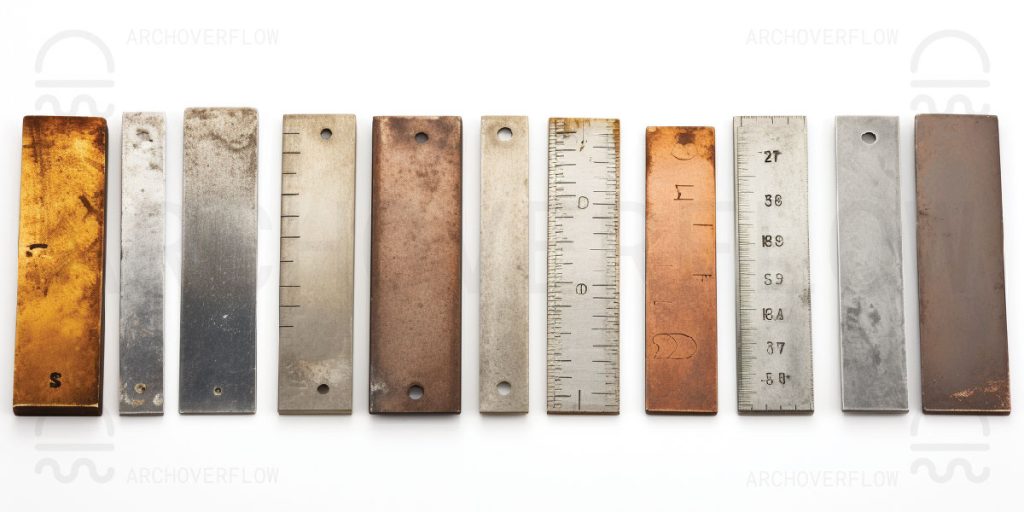
Gauge & Thickness
The thickness of different metal products (sheet steel, tubing, strips, etc) is normally expressed as a gauge, or thickness in either decimal inches or decimal mm.
Gage numbers come from olden times when metal was sold based on weight, however, this was not efficient since density, coatings, etc. all affect the metals and are not reflected in the gauge. Different manufacturers also had their own gauge numbers, which might still be used today.
Because of this, it’s always better to call out and specify the actual desired thickness in decimals of inches or mm depending on imperial or metric systems used. Also note that gauge #7 in brass, will not be the same as gauge #7 in copper — there will be a different definition from materials to material.
Variations
Always reference the manufacturers pricing tables/gauge charts/etc for exactly what is defined as what. Remember that due to the manufacturing process, variations in thickness are to be expected.


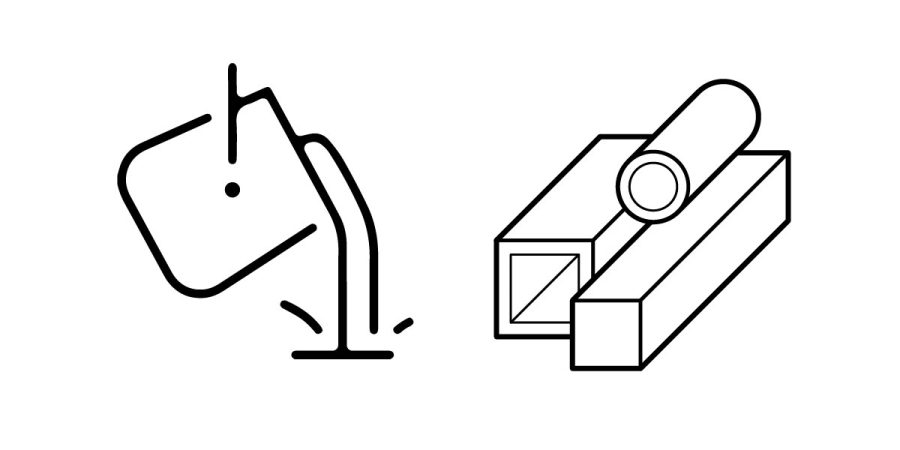
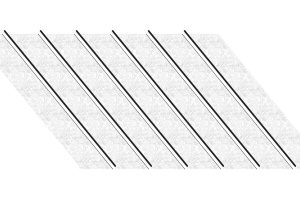
Leave a Reply
You must be logged in to post a comment.